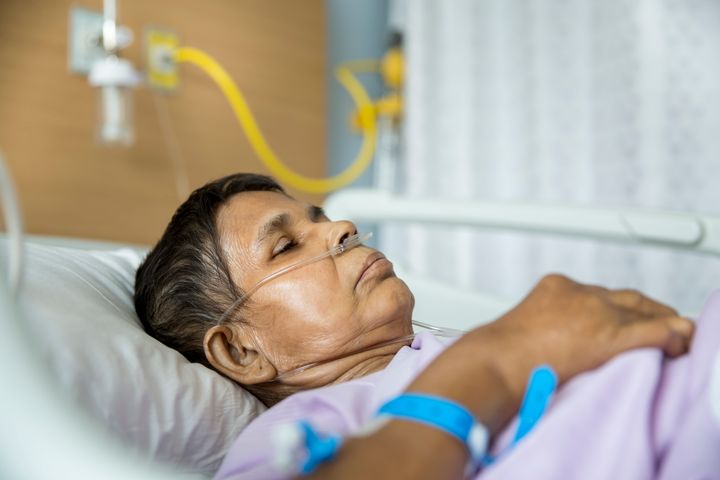With a new study showing women are more likely to die than men after experiencing a heart attack, knowing the signs and treatment could easily mean the difference between life and death.
A heart attack is a medical emergency caused by a clot forming in one of the three coronary arteries that supplies blood to the heart muscle. This prevents blood from flowing to the heart, which can prove very dangerous.
At this stage, it’s vital that blood flow is restored to the heart, which is why you should dial 999 immediately and ask for an ambulance if you suspect you’re having one.
As the NHS puts it: “Don’t worry if you have doubts. Paramedics would rather be called out to find an honest mistake has been made than be too late to save a person’s life.”

Signs of a heart attack
Emily McGrath, senior cardiac nurse at the British Heart Foundation (BHF), told HuffPost UK that symptoms of heart attacks can vary from person to person and women are less likely to recognise symptoms. For example they might mistake a heart attack as indigestion, as the symptoms can feel similar.
The most common sign of a heart attack is chest pain or discomfort. NHS Choices describes this as “a sensation of pressure, tightness or squeezing in the centre of your chest”.
If it feels like indigestion, it can be difficult to determine whether it’s a heart attack or not, which is why it’s important to be aware of other symptoms that may arise such as:
:: Feeling lightheaded or dizzy
:: Sweating
:: Feeling short of breath
:: Nauseousness or vomiting
:: Coughing or wheezing
:: Feeling very anxious (like having a panic attack)
:: Pain in other parts of the body. Emily from BHF explained further: “Pain can radiate to the arms, neck, jaw and back. You might experience pain down one side of the body or both. It doesn’t necessarily happen on the left side, which some people believe.”
Diagnosis
If you’re suspected to be having a heart attack, you should receive an ECG within 10 minutes of arriving at hospital, according to the NHS.
The test checks the heart’s rhythm and electrical activity, which is essential for swift diagnosis and treatment.
Treatment
Treatment options given to patients will depend on the type of heart attack they’ve had.
For example, if they’ve had ST segment elevation myocardial infarction (STEMI), which is where the coronary artery is completely blocked by a blood clot, they will need to be treated as soon as possible to minimise damage to the heart. Treatment for STEMI involves a procedure to widen the coronary artery.
Another treatment option is called coronary angioplasty. This involves inserting a tiny tube known as a balloon catheter into a large artery in the groin or arm. According to the NHS, the catheter is guided to the heart where it is then positioned in the coronary artery and inflated in order to open the artery and free up the blockage.
A stent, which is a flexible metal mesh, is usually inserted into the artery to help keep it open afterwards.
Patients may also be given medication like aspirin or heparin to thin the blood and prevent further blood clots. Some of these medications may be continued for some time afterwards.
Some patients might receive medication to break down the blood clot, known as thrombolytics or fibrinolytics. They may also be offered something called glycoprotein IIb/IIIa inhibitor which can prevent blood clots from getting bigger and stop symptoms from worsening.